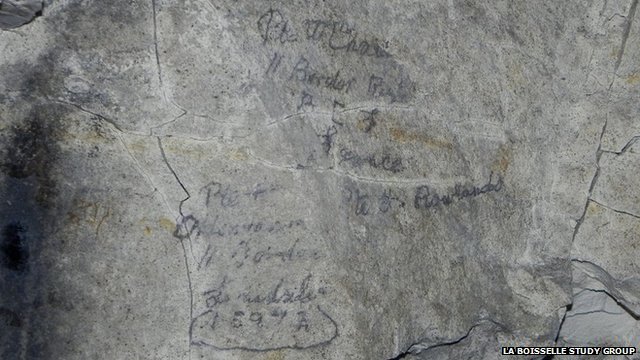The tunnels haven’t been touched for almost 100 years. Inside, archaeologists found out the signatures came from a Cumbrian regiment. Many other objects which used to belong to soldiers lie under the Battle of the Somme site, from ammunition to food tins. The writings on the walls are perfectly legible and were written in pencil.
Genealogist Glen Phillips was amazed by the discovery, saying how important and how fresh this new piece of history is. He continued saying that because the tunnels had been sealed up such a long time ago, the signatures and the poems are all fresh.
Many explorers and other volunteers have joined the searching team, spending the last few years researching La Boisselle, a Western Front site which hasn’t been touched since the end of the First World War.
A call has been made for the relatives of the soldiers who penciled their messages on the walls, to come forward.
“When I first saw them I was blown away,” said Mr Philips, who is also part of the La Boisselle team. He said he doesn’t want anything else so bad, but to find the families of these people and share with them the experience he lived when he saw those messages for the first time.
Records show that almost 1.2 million servicemen lost their lives during the Battle of the Somme in 1916, however, a group of soldiers fought their own war underground. The tunnels were initially created for the troops so they could put explosives just below enemy sites, the BBC News reports.
Most of the men who worked underground came from the north of England and they were mostly miners, however, there were also a few infantrymen who were pushed into serving underground.
The messages found in the tunnels are from Privates William Carr, William Chard and Obadiah Henderson. All three of them helped the miners prepare the tunnels before the first day of the Battle of the Somme, on July 1, 1916.
Pte Obadiah Henderson was a farm worker from Riding Mill in Northumberland; Pte William Chard came from Longtown, Cumberland. Henderson and Chard, both survived the First World War and went back home after. Pte Carr was shot in the leg during the first day of the battle and was sent home to recover. He went back to the front to fight in the Battle of Arras, where he served with the 2nd Battalion. He died of wounds on June 24, 1917.
“If in this place you are detained, don’t look around you all in vain, but cast your net and you will find, that every cloud is silver lined. Still.” read one of the poems found in the tunnels.
